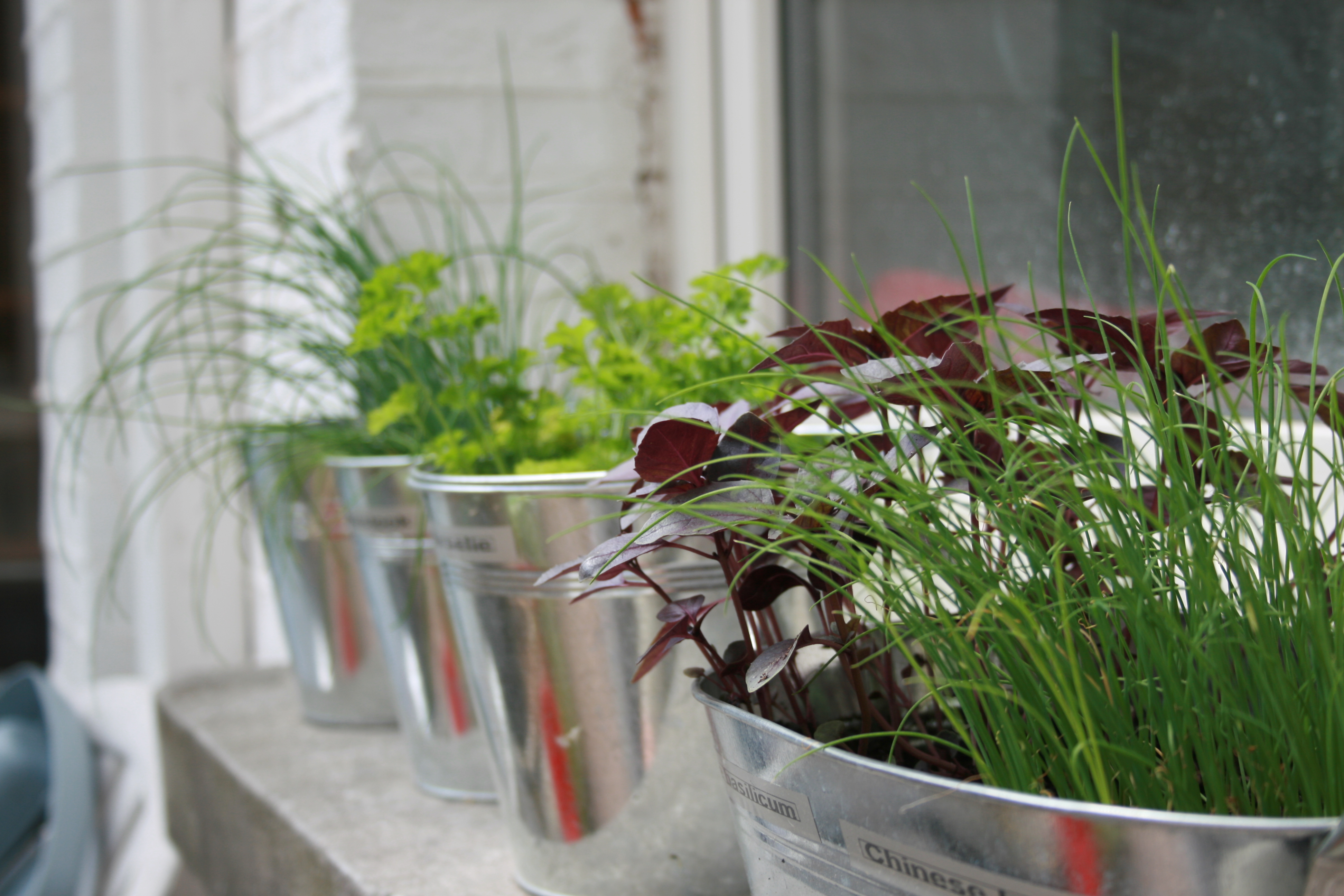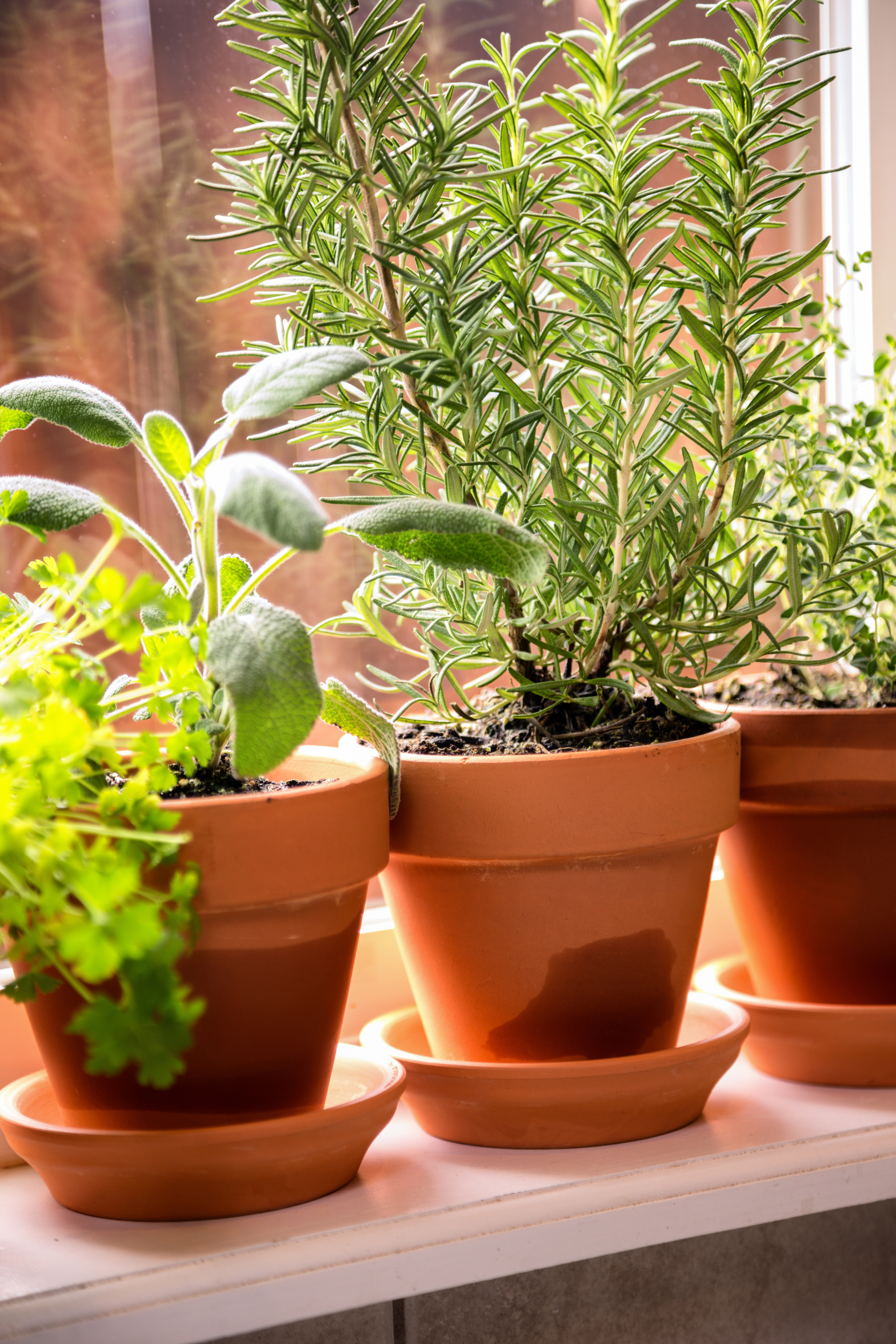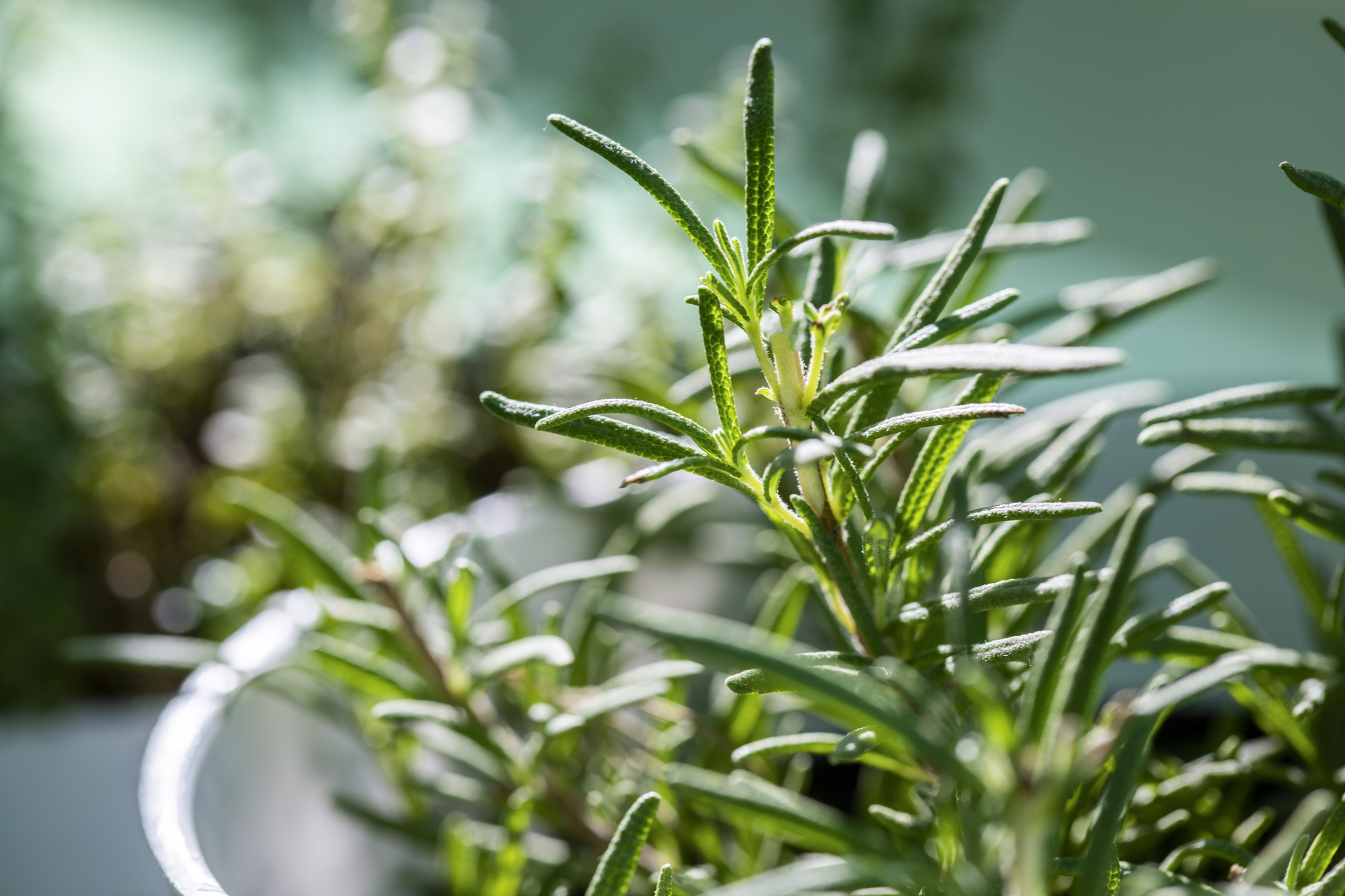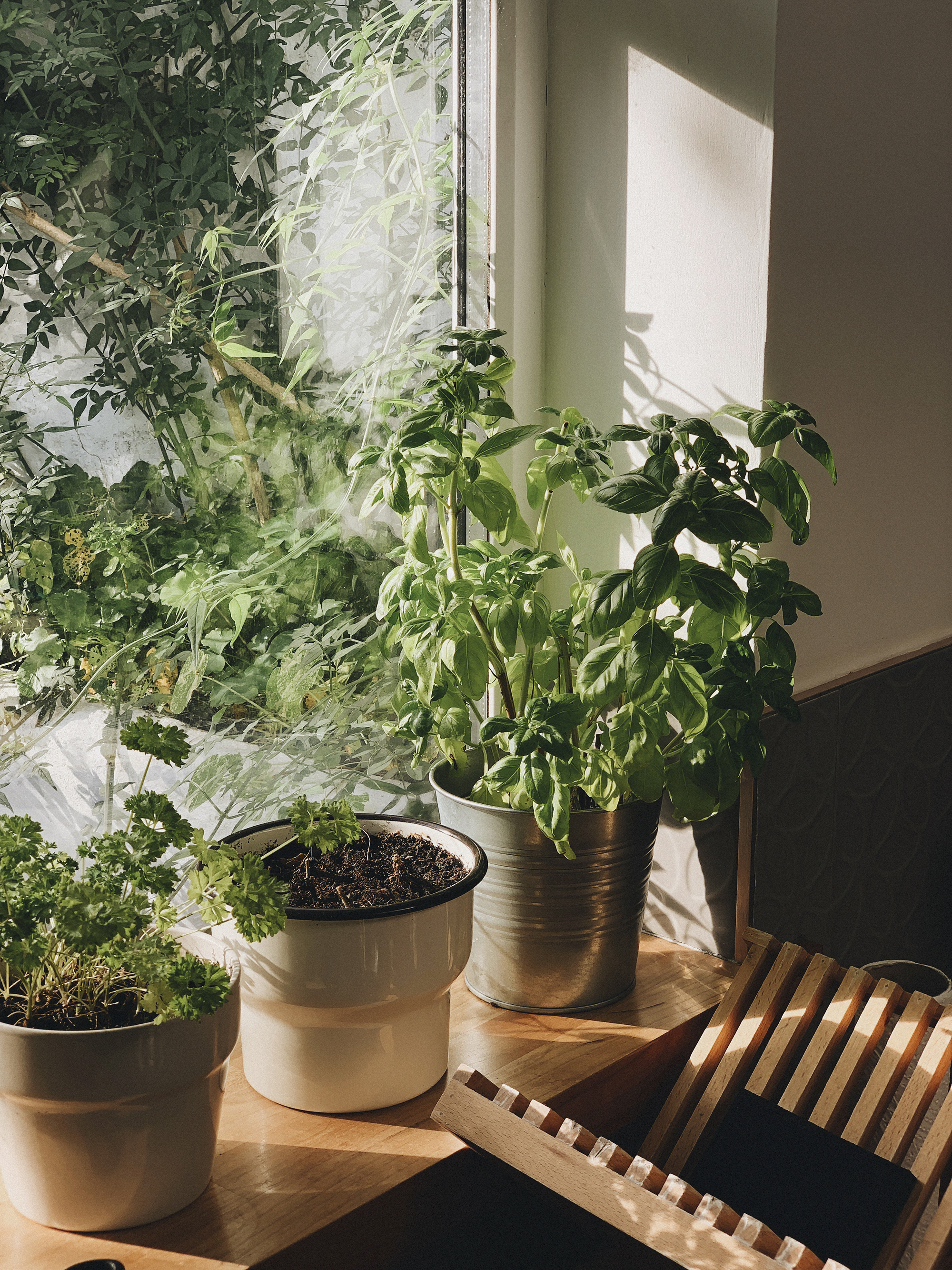
Indoor herb gardens are an easy way for anyone to start growing fresh ingredients in the kitchen - all you really need is a window sill. You don't have to be especially green-thumbed to keep your plants happy and healthy either. That said, there are some common herb gardening mistakes that experts urge you to avoid if you want your herbs to thrive, and chances are you're guilty of at least one of them.
When planting an edible garden in our kitchen, we all start off with the best intentions. Using fresh herbs to season your meals - all within arms reach of the oven - is an appealing idea, but instead you're met with withering plants with limp-looking leaves that are few and far between. The (somewhat) good news is, this nearly always boils down to six common mistakes when it comes to herb plant care, and we're here to put a stop to them.
With the help of some gardening experts, we've listed the most frequent pitfalls when tending to your indoor garden - and nearly all of us are guilty of at least one of them. For herbs that produce an abundance of fragrant foliage all year round, here are six mistakes you should avoid at all costs.
1. Overwatering your plants

Many of us are actually guilty of showing our leafy babies too much love, and that often manifests as overwatering. Different herbs have different needs and some need watering more often than others, but none of them want to be drowned. In fact, too much water will cause your herbs' roots to rot and will eventually kill your plant if the soil becomes too waterlogged.
'Your herbs should only be watered when the top inch of soil becomes dry,' says Amy Enfield, Ph.D., a Scientist at Scotts Miracle-Gro. 'The easiest way to test this is by gently sticking your finger into the soil either daily or every other day. If the soil still feels cool and damp, wait to water, but if the soil is dry, it’s time to give them a drink.'
Since we tend to keep our herbs so close to the kitchen sink it can be tempting to give them a little drink every day, but Amy says this 'little and often' method isn't actually doing your plants any favors. 'When you water your herbs, water thoroughly,' she says. 'To keep the plant happy and make your indoor herb garden produce more, saturate the soil - watering near the base of the plant to keep water off the leaves - and allow the excess water to drain away.'
2. Choosing a container with insufficient drainage
Closely linked to overwatering is the mistake of choosing a pot that doesn't have sufficient drainage holes, a common error when cultivating an indoor herb garden. Just like any other type of container gardening, your herbs' soil needs to drain, so it's vital you choose a planter that has holes at the bottom.
To stop water draining from your plant too quickly and to help prevent stains on the surface underneath, it's a good idea to use a tray below your planter. A tray will also allow your plant to intake water from the roots below, saturating the soil and the bottom roots. 'Just remember to remove any standing water in the collection tray that remains after 20 minutes to prevent root rot,' says Amy.
3. Neglecting to prune your foliage

We all want our herbs to last, but you shouldn't be hesitant of harvesting them. You might think that using your herbs sparingly will keep them going for longer, but as it turns out, the opposite is true. Unlike other houseplants, herbs are meant to be picked.
According to Tony O'Neill, gardening expert and owner of Simplify Gardening, failure to prune your foliage frequently will actually inhibit the growth of your plant. 'This is because regular pruning encourages branching, producing a bushier, more productive plant,' he says.
Before you go in with the scissors, note that this should only be a light trim. 'When you trim your herbs, you should never remove more than ⅓ of the plant in a single harvest,' says Amy. She adds that this only needs to be done once a week, or every other week depending on how fast your plant is growing, and it will help keep your herbs from flowering, something that can alter their flavor (and not in a good way).
4. Not providing adequate lighting
Pretty much all types of herbs prefer full sunlight, which means mimicking their ideal conditions during indoor gardening isn't easy. As Tony emphasizes: 'You should ensure your herbs receive at least six to eight hours of sunlight or artificial light daily.' This means they should always be placed in the sunniest spot possible, such as a windowsill.
Failure to provide your herb plants adequate light is a common mistake when caring for indoor herbs. Many of us think they're safe on the windowsill, but if your window faces north or is overlooked by a wall, chances are your plants won't receive the light they need. Move them to a south-facing window in another room if you can, or purchase an artificial grow light if necessary.
According to Amy, these are actually the easiest way to make sure your herbs are getting enough light, especially during the winter months. 'These specialty lights mimic direct sunlight and are a great solution if your home is short on bright, sunny south-facing windows and in the winter when natural sunlight is reduced,' she says.
5. Using poor quality soil

When it comes to indoor herb gardening, it's not enough to just throw some soil in a pot and hope for the best. You'll need to ensure you use nutrient-rich soil to keep your plants thriving, especially since they have to survive within the confines of a small pot.
Tony recommends investing in a well-draining potting mix with added organic matter to provide essential nutrients, such as bone meal or fish emulsion. 'We always recommend filling your containers with a premium quality bagged potting mix, like our Miracle-Gro® Indoor Potting Mix,' says Amy. 'The potting mix is specially formulated for indoor container plants and has been formulated to be easy to water, too.'
6. Placing them near an artificial heat source
Herbs are one of the best plants to grow in the kitchen, and it makes sense to keep your plants within easy reach when you're cooking. Convenient though it may be, this can be a mistake if it leads to your plants being exposed to too much artificial heat.
If your plants are close to your oven, chances are they'll be over-exposed to heat, not to mention grease splatters from cooking. This can lead to withering and wilting leaves overtime, especially with more delicate herbs such as basil, cilantro, and dill. Steamy water from the kettle or sink will also pose a risk to plants that are nearby, and the same goes for radiators too.
If you can, keep your plants on a wide window sill where you can easily open the window to provide them with some fresh air. Alternatively, you can buy a designated plant stand, like this one from Amazon, to give your plants a designated spot away from any artificial heat sources.







